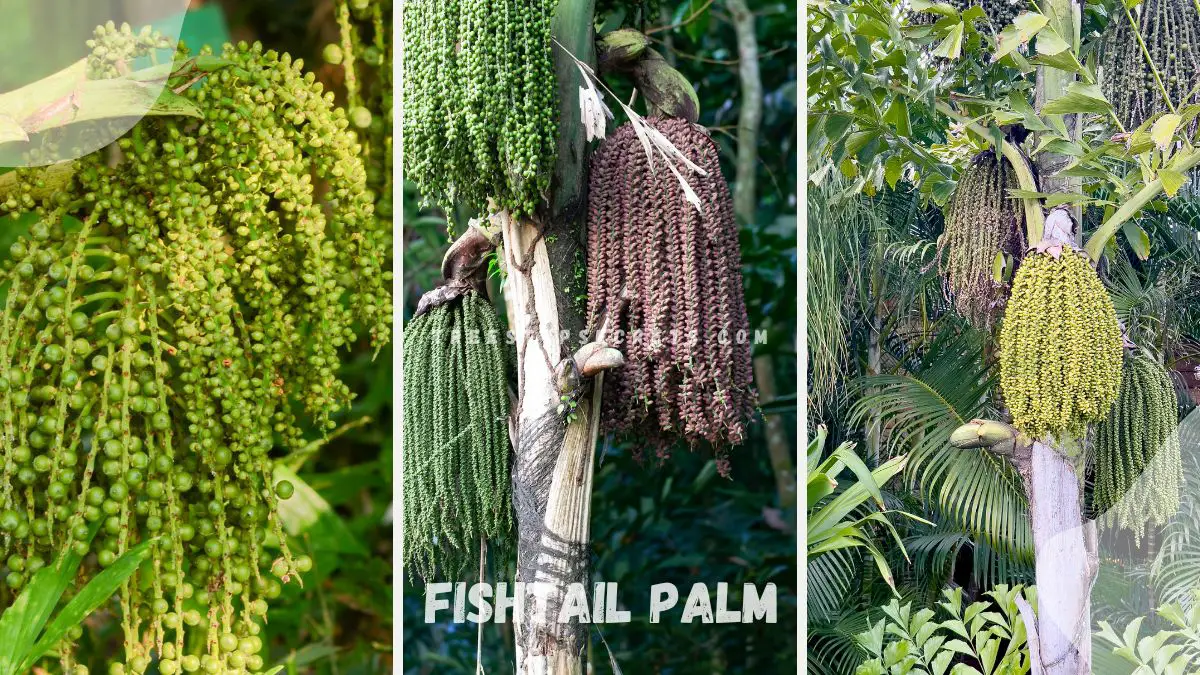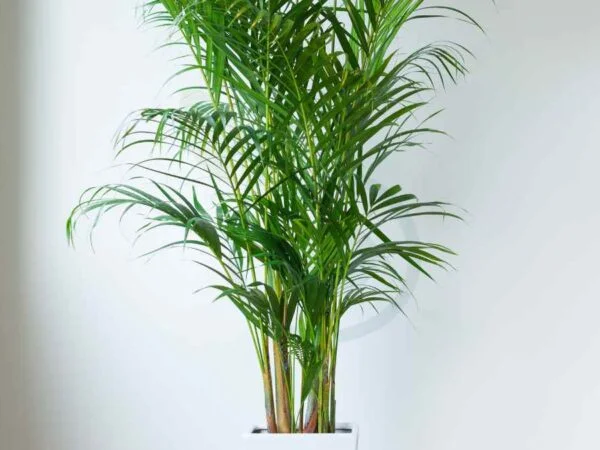If you're looking for comprehensive information on the Fishtail Palm, you're in the right place. Known for its unique, fishtail-shaped leaves and distinctive palms, the Fishtail Palm (Caryota) with bipinnate foliage can be an elegant addition to your indoor or outdoor garden. This striking plant thrives in tropical and subtropical climates but can adapt to indoor environments with proper care. Whether you’re a seasoned gardener or just starting, I can guide you on everything from planting to maintaining your Fishtail Palm, ensuring it remains healthy and vibrant.
The Fishtail Palm (Caryota) is characterized by its distinctive leaves, which resemble a fishtail. Native to Southeast Asia and the Pacific Islands, this distinctive palm can reach heights of 20 to 40 feet (6 to 12 meters) in ideal outdoor conditions but usually remains smaller indoors. It prefers well-draining soil and a position where it receives filtered sunlight. Watering needs vary with the climate; typically, it requires consistent moisture but should not be waterlogged. Fertilize with a balanced, slow-release fertilizer in the growing season to promote healthy growth. Regular pruning helps manage its size and shape, while keeping an eye out for common pests like spider mites and scale is essential for maintaining its health.
To dive deeper into the world of Fishtail Palms, including their care requirements and troubleshooting tips, check out our detailed guides and expert advice. Whether you're growing them indoors or out, we've got more to share to help your Fishtail Palm thrive!
Key Takeaways
- Understand the needs of your fishtail palm to provide proper care and ensure its health and growth.
- Follow essential care practices such as watering, lighting, and fertilizing to maintain a thriving fishtail palm.
- Implement advanced care practices like pruning and repotting to promote optimal growth and development.
- Encourage blooms in your fishtail palm by creating the right environment with adequate light and humidity.
- Address common issues such as yellowing leaves or pest infestations promptly to keep your fishtail palm healthy.
- By following these guidelines, you can enjoy a beautiful and flourishing fishtail palm in your indoor or outdoor space.
Understanding Fishtail Palm
Plant Specs
Identify the fishtail palm by its bipinnate foliage, which resembles a fish's tail fin, hence the name. The genus and species of fishtail palms vary, with the most common being Caryota urens.
Recognize that fishtail palms thrive in warm climates, preferring temperatures above 50°F. These palms are native to Southeast Asia and the Pacific region.
Growth Habits
Observe the growth pattern of fishtail palms, known for their rapid growth rate and ability to reach towering heights. These palms typically grow in clusters, creating a lush tropical appearance.
Understand the natural habitat of fishtail palms, which includes rainforests and tropical regions with high humidity levels. Some fishtail palm species have invasive tendencies, spreading rapidly in certain environments.
Unique Characteristics
Explore the unique leaf shape of fishtail palms, characterized by deeply divided fronds that resemble fishtails. These distinctive leaves add an exotic touch to any landscape or indoor space.
Discover the distinctive features of fishtail palm flowers, which bloom in clusters and produce small, colorful berries. These flowers attract pollinators and add visual interest to the palm tree.
Note the specific regions where different fishtail palm species are found, such as Southeast Asia, Australia, and parts of Africa. Each region offers unique variations in leaf structure and growth habits.
Essential Care Guide
Light Needs
Fishtail palms require adequate light to thrive, making them ideal for bright, indirect light conditions. Understanding their light preferences is crucial for their growth. Direct sunlight exposure should be avoided for extended periods to prevent leaf scorching.
Soil Types
When selecting soil for fishtail palms, opt for a well-draining mix to prevent waterlogging, which can lead to root rot. Ensure the soil's pH is suitable for optimal growth. Consider using a blend of peat moss and perlite to enhance drainage and aeration.
Watering Schedule
Establishing a regular watering routine is essential for fishtail palms' health. Monitor soil moisture levels consistently to avoid overwatering, which can cause root suffocation. Adjust the watering frequency based on environmental conditions like humidity and temperature.
Temperature and Humidity
To promote healthy growth, maintain warm temperatures around fishtail palms, ideally between 70-85°F (21-29°C). Adequate humidity levels are vital, so consider using a humidifier or placing a tray of water near the plant. Protect the palms from sudden temperature fluctuations to prevent stress.
Advanced Care Practices
Fertilizing Tips
Fishtail palms thrive with balanced fertilizer applications to support growth and health. Utilize a fertilizer specifically formulated for palm plants to provide essential nutrients. During the growing season, apply the fertilizer according to the manufacturer's instructions, ensuring proper absorption by the plant. Avoid over-fertilizing, as excessive nutrients can lead to imbalances and harm the palm.
Pruning Techniques
Regular pruning is essential for maintaining fishtail palms' appearance and health. Begin by removing any dead or damaged fronds to promote new growth and prevent disease spread. Trim excess foliage carefully to enhance the plant's aesthetics and overall vitality. When pruning, always use sharp, clean tools to make precise cuts and minimize the risk of infections.
Repotting Guide
When fishtail palms outgrow their current containers or become root-bound, it's time to consider repotting. Select a slightly larger pot than the current one to accommodate the palm's growing roots comfortably. During the repotting process, take the opportunity to refresh the soil by replacing some of the old soil with fresh, nutrient-rich potting mix. Remember that proper repotting can help maintain the plant's health and vigor.
Encouraging Blooms
Bloom Months
Fishtail palms typically bloom during specific months, varying based on the species. Expect vibrant blooms during peak seasons, adding beauty to your surroundings.
Flower Features
Appreciate the unique characteristics of fishtail palm flowers, such as their intricate shapes and sizes. Recognize the various color variations that these blooms exhibit.
- Bright pink hues
- Creamy white tones
- Deep red shades
Boosting Blooms
Enhance blooming by providing adequate care and nutrition to your fishtail palm. Stimulate flowering through precise pruning techniques, ensuring optimal growth and development.
- Regular watering
- Balanced fertilization
- Adequate sunlight exposure
After Bloom Care
After the blooming period, remove spent flowers promptly to encourage new growth. Continue with regular maintenance practices to support the overall health of your plant.
- Pruning dead fronds
- Monitoring for pests
- Adjusting watering frequency
Common Issues and Solutions
Pest Management
Fishtail palms are susceptible to common pests like spider mites and mealybugs. These pests can damage the plant by feeding on its leaves. To protect your fishtail palm, use organic pest control methods such as neem oil or insecticidal soap. Regularly monitor the plant for any signs of pest infestations, such as webbing or sticky residue on the leaves.
Troubleshooting Yellow Leaves
When you notice yellowing leaves on your fishtail palm, it's crucial to act promptly to prevent further damage. One common cause of yellow leaves is overwatering, which can lead to root rot. Adjust the watering schedule and ensure the plant receives adequate light to help revive the yellowing foliage.
Addressing Brown Foliage
Brown foliage on a fishtail palm can indicate underlying issues such as inadequate light or nutrient deficiencies. Investigate the potential causes of browning foliage to determine the best course of action. Take corrective measures like adjusting the plant's location to provide more light or fertilizing with a balanced palm fertilizer to restore the health of the browned foliage.
Preventing Soggy Foliage
To prevent soggy foliage in your fishtail palm, it is essential to avoid overwatering. Ensure that the soil has proper drainage to prevent waterlogging, which can lead to root suffocation. Regularly monitor the soil moisture levels and adjust your watering routine accordingly to maintain optimal conditions for your plant.
Final Remarks
In caring for your fishtail palm, understanding its unique needs is key to fostering healthy growth and vibrant blooms. Remember the essential care practices discussed here, including proper watering, lighting, and fertilization. By implementing advanced care techniques like pruning and pest management, you can further enhance the well-being of your plant. Encouraging blooms requires patience and diligence, but the rewards of a flourishing fishtail palm are worth the effort. Should common issues arise, refer back to the solutions provided to address them promptly and effectively.
Now that you have a comprehensive guide to caring for your fishtail palm, take action by applying these insights to nurture your plant to its fullest potential. Share your newfound knowledge with fellow plant enthusiasts to spread awareness and promote healthy plant care practices.
Frequently Asked Questions
What are the key characteristics of the Fishtail Palm?
The Fishtail Palm is known for its unique fishtail-shaped leaves, rapid growth rate, and ability to thrive in tropical climates.
How often should I water my Fishtail Palm?
Water your Fishtail Palm thoroughly once a week during the growing season, allowing the soil to slightly dry out between waterings to prevent root rot.
How can I encourage blooms on my Fishtail Palm?
To encourage blooms, provide bright indirect light, maintain proper humidity levels, and fertilize with a balanced palm fertilizer during the growing season.
What are common issues that affect Fishtail Palms?
Common issues include yellowing or browning of leaves due to overwatering, low humidity levels, pests like spider mites, and nutrient deficiencies.
How can I resolve common problems with my Fishtail Palm?
Address issues by adjusting watering frequency, increasing humidity through misting or a humidifier, treating pests with neem oil, and fertilizing with a palm-specific fertilizer. Regularly inspect your plant for signs of distress.
Image Source: Paid image from CANVA





